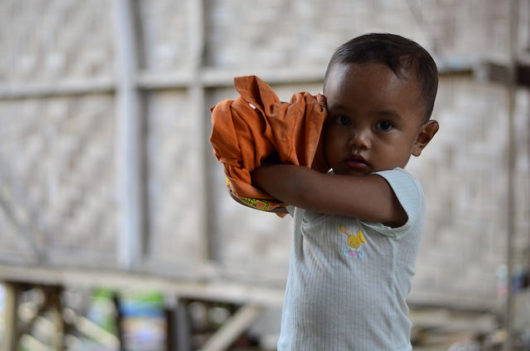Top 10 Facts About Living Conditions in Indonesia

In a country that is spread to more than 13,000 islands in the southern part of Asia, Indonesia has a population of roughly 267 million people. This makes Indonesia the fourth most populated country in the world.
Of these 267 million, an estimated 10 percent found themselves living in poverty throughout the country in 2017. With the hopeful expansion for opportunities for economic growth, this article presents the top 10 facts about living conditions in Indonesia, the country that lies in the area of active volcanos.
Top 10 Facts about Living Conditions in Indonesia
- Indonesia sits on what Johnny Cash refers to as the “burning ring of fire” of the Pacific that is responsible for 90 percent of the Earth’s earthquakes. Due to its 127 active volcanos, Indonesia falls victim to many earthquakes and other natural disasters stemming from the natural phenomenon. Since 2004, there have been 13 reported earthquakes that have caused irreparable damage to Indonesia’s infrastructure and took the lives of thousands of people.
- A known side effect of Indonesia’s earthquakes are the tsunamis that inevitably follow. These tsunamis are making the country’s coastlines barely inhabitable. In September 2018, the latest tsunami struck Indonesia and claimed the lives of over 1,500 people, according to CBS. In addition, Indonesia experiences a period of harsh rainfall for a couple of months each year which leads to damaging floods and landslides in some parts of the country.
- Indonesia has an unusually high life expectancy rate of 71 years. This number was much lower in the past but thanks to government-funded health programs for the poor, 111.6 million people now have access to health care. The government isn’t stopping at this number either and they predict that in 2019, 95 percent of the population will be enrolled in the health program making it universally accessible.
- Indonesia is classified as a lower-middle-class country. However, like in most world countries today, there is large income disparity between the very poor and the very wealthy. While the top 20 percent of the population has a food budget of up to $100 dollars a day, people of lower income are living off on less than $1 a day.
- The country lacks access to food. Due to its coastal environment, transportation is scarcely limited which affects Indonesia’s ability to access goods such as food staples. Rice is one such staple that Indonesians depend on for meals but the price of it has risen up to 70 percent higher in comparison to other nearby countries making it inaccessible to low-income households.
- Malnutrition is a huge problem among Indonesia’s children due to the lack of a well-rounded diet caused by rising food prices. An estimated 37 percent of children aged 5 years or younger are stunted in growth. This causes them to develop serious health problems later in life as a result. In children 15 and older, obesity is becoming more common because of nutritional deficiencies.
- Over the last few years, many of Indonesia’s leaders have dedicated initiatives to combat the poverty problem in the country. In 2014, the number of funds dedicated to decreasing the income inequality in Indonesia was increased by 2 percent and focused on education and health programs. From 2015 to 2018, leaders increased the budget again from 9 to 12.8 percent and aimed it toward Indonesia’s infrastructure.
- One of Indonesia’s many projects targeting changes in the country’s infrastructure is aimed at connecting its many islands and bringing the country into the 21st century. The country hopes to provide internet to people in rural and urban areas alike by extending a cable underwater. This initiative could have a profound effect on the literacy and education rate in Indonesia and can be another step closer to poverty eradication in Indonesia.
- Indonesia sets 20 percent of its annual budget aside for education expenses, but money doesn’t always equal the education. An overwhelming amount of children in Indonesia lack some of the fundamental education skills like reading, math and science needed to be successful in life.
- Lack of clean water and inefficient sanitation is also a big problem in Indonesia. UNICEF reports that one in eight households do not have access to clean water that has been linked to the high number of deaths caused by diarrhea. Lack of proper sanitation facilities has led to 29 percent of people in rural areas defecating in public.
In recent years Indonesia has proven to be very successful in poverty reduction. This was done by improving the infrastructure and closing the gap in income inequality by connecting the country’s islands. The top 10 facts about living conditions in Indonesia presented above prove it.
The only thing that seems to be in the way of Indonesia’s success for unity and poverty reduction is the towering threat of natural disasters. While money is being allocated to assist the poor, progress is being swept away by its frequent natural disasters that add to the rate of poverty in the country.
– Catherine Wilson
Photo: Flickr
